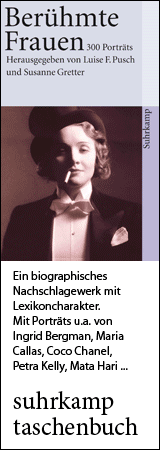
born on May 30, 1928 in Ixelles (Brussels)
died on March 29, 2019 in Paris
French film director and photographer
5th anniversary of her death on March 29, 2024
Biography
Agnès Varda was 26 years old and working as a photographer for Jean Vilar's famous Théâtre National Populaire in Paris. She had no clue about filmmaking and had actually only been to the movies a few times in her life. But she was fascinated by the idea of using the camera to make her precisely composed photographic images speak. So, in 1954, she founded her own production company, Ciné-Tamaris, and shot her first feature film in a fishing district of the southern French town of Sète with limited financial resources. She allowed two unconnected storylines to run side by side: On the one hand, the relationship conflicts of a young married couple who had traveled from Paris - portrayed in a strangely detached manner by Silvia Monfort and the young Philippe Noiret - and on the other, the hard lives of the mussel fishermen, marked by everyday worries and protests against health inspections, played by the inhabitants of the village in their natural environment.
Alain Resnais recognized the exceptional quality of her material, and took on montage and editing in exchange for a free dinner every evening. He also helped his young colleague with the distribution; a Parisian studio cinema ran Agnès Varda's debut film for a whole two weeks. Today, La Pointe Courte is regarded as the first contribution to French New Wave, the series of innovative films at the beginning of the 1960s by young directors (Godard, Truffaut, Chabrol and others) that revolutionized French film and that stood in contrast to Hollywood’s narrative cinema. Agnès Varda was “alone among men” in this transformative movement and for a long time only insiders were familiar with her work.
Born in Brussels to a French mother and a Greek father, Agnès Varda spent her childhood in Belgium, her adolescence in Sète, where her family had fled from the war, and her student years in Paris, where she studied art history and photography. After her debut with a feature film, she made short films for the French Ministry of Tourism, political documentaries (e.g. about Cuba where she travelled in 1962 and returned with 1800 photographs), portraits of people who were close to her (e.g. her favorite actress Jane Birkin, later her husband Jacques Demy), or who impressed her with their way of life, such as those who live off the scraps of affluent society (The Gleaners and I, 2000). She developed an innovative perspective and an original tone in these “subjective documentaries.” By juxtaposing the images in a unique manner and adding her own playfully ironic commentary, the author was present throughout the entire film. This, she believed, was a sign not of narcissism but of “honesty.”
In 1958, shortly after filming L'Opéra Mouffe, a portrait of Rue Mouffetard in Paris from the perspective of a pregnant woman, Varda gave birth to her daughter Rosalie, from whose father, Antoine Bourseiller, she had already separated. In the same year, she met Jacques Demy, a young New Wave director, who was later to become known primarily for his musicals. They married in 1962 and their son Mathieu was born in 1972. Although their partnership was not always easy (Demy was bisexual and died of AIDS in 1990 at the age of 59), the relationship with her husband meant a great deal to Varda. She once explained: “I could have never spent my life with a pharmacist, although I have the utmost respect for the profession.”
Five years after La Pointe Courte, Varda once again had the means to make a feature film. Cléo from 5 to 7 (1961) showed, almost in real time, two hours in the life of a beautiful, spoiled singer who, driven by her fear of the results of a biopsy, rushes through Paris and develops from the object of desire under the male gaze into a self-confident woman. This early example of Varda's feminist point of view (“I was a feminist from the age of 19”) certainly contributed to her outsider position in the context of French avant-garde filmmaking.
She subsequently became more explicit, returning in 1969 from Los Angeles after three years there with Jacques Demy with several short films (about the Black Panthers and 1960s pop culture, among others) and ideas from the American women's movement. In 1971, she signed the French Manifesto of the 343 for the liberalization of abortion and addressed this women's struggle in her feature film One Sings, the Other Doesn’t (1976).
It was not until 1985 that she experienced box-office success with a kind of female road movie: Mona, a young drifter, played depressingly impressively by 17-year-old Sandrine Bonnaire, is found frozen to death in a ditch at the beginning of the film. The film compiles the image of this stubborn, taciturn outsider from the accounts of various people who met her in the last weeks of her life - as is often the case with Varda, in an irritating mixture of documentary and fiction and at the same time a haunting portrayal of the lives of homeless people. She received the Golden Lion in Venice for Vagabond (Sans toit, ni loi) and Bonnaire the César in Cannes for her leading role. Over a million French viewers saw the film in its first year.
After an oeuvre of over 40 feature and documentary films (some of which are now available on DVD), Varda experimented with photo and video installations in later years and often reflected on her own work. In her cinematic self-portrait The Beaches of Agnes (2008) and the five-part ARTE television series Agnès war da (Agnès de-ci de-là Varda, 2012), she showed the landscapes, people, and works of art that had shaped her and that she loved. And among all these she filmed herself as well: a small, colorfully dressed, lively woman of 85 in search of the cinematic writing she called cinécriture.
Agnès Varda died at the age of 90 on March 29, 2019 in Paris.
(Text from 2012; translated with DeepL.com; edited by Ramona Fararo, 2024.)
Please consult the German version for additional information (pictures, sources, videos, bibliography).
Author: Andrea Schweers
If you hold the rights to one or more of the images on this page and object to its/their appearance here, please contact Fembio.



